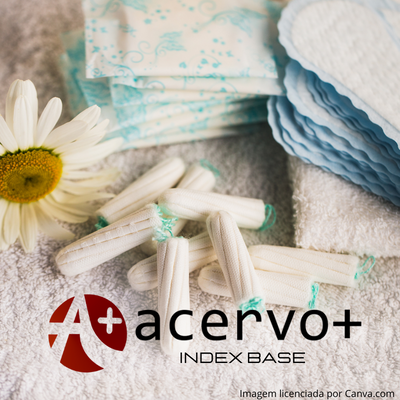Percepção do fluxo menstrual por mulheres e a sua relação com a escolha de produtos de higiene menstrual
##plugins.themes.bootstrap3.article.main##
Resumo
Objetivo: Relacionar o uso do coletor menstrual com outros produtos de higiene menstrual, bem como a percepção do corpo e do fluxo menstrual por mulheres brasileiras, visto que o assunto ainda é pouco discutido no Brasil. Revisão bibliográfica: A menstruação é um fenômeno fisiológico e, apesar disso, é estigmatizada como um tabu pelas normas socioculturais. A exposição a esses padrões pode definir a forma como as mulheres a vivenciam e a qualificam. O coletor menstrual, apesar de existir desde o século XIX, apenas hoje vem ganhando notoriedade no Brasil. O seu uso é importante de um ponto de vista ambiental e econômico, além de possibilitar um maior empoderamento e desenvolvimento social das mulheres, especialmente pelo fato de implicar no conhecimento maior do corpo pelas próprias mulheres. Considerações finais: Naturalizar a menstruação é um processo necessário, afinal grande parte da população brasileira menstrua. E, mesmo diante dos diversos benefícios dos coletores menstruais, ainda há muita resistência ao seu uso, o que pode estar relacionado à estigmatização da menstruação e do corpo feminino. Por isso, não basta apenas normalizar, é necessário capacitar e orientar a população feminina a ter uma percepção mais honesta e consciente sobre sua fisiologia e seu empoderamento frente à sociedade.
##plugins.themes.bootstrap3.article.details##
Copyright © | Todos os direitos reservados.
A revista detém os direitos autorais exclusivos de publicação deste artigo nos termos da lei 9610/98.
Reprodução parcial
É livre o uso de partes do texto, figuras e questionário do artigo, sendo obrigatória a citação dos autores e revista.
Reprodução total
É expressamente proibida, devendo ser autorizada pela revista.
Referências
2. CIRIBELLI F. O corpo pedagogizado: fluidos femininos e propagandas de absorvente. Revista Internacional de Comunicación y Desarrollo (RICD). 2017; 2(6): 47-56.
3. COURTS L. The portrayal of the menstruating woman in menstrual product advertisements. Health Care for Women International. 1993; 14(2): 179-191.
4. ERCHULL M. Distancing Through Objectification? Depictions of Women’s Bodies in Menstrual Product Advertisements. Sex Roles. 2011; 68(1-2): 32-40.
5. GROSE R, GRABE S. Sociocultural Attitudes Surrounding Menstruation and Alternative Menstrual Products: The Explanatory Role of Self-Objectification. Health Care for Women International. 2014; 35(6): 677-694.
6. HOFFMAN BL. Ginecologia de WILLIAMS. 2014; 2.
7. HOWARD C, et al. Flow (finding lasting options for woman): Multicenter randomized controlled trial comparing tampons with menstrual cups. Canadian Family Physician. 2011; 57(6): 208-215.
8. HOWARD PAP, et al. Menstrual cups and sanitary pads to reduce attrition, and sexually transmitted and reproductive tract infections: a cluster randomised controlled feasibility study in rural Western Kenya. BMJ Open. 2016; 6(11): 1-11.
9. JOHNSTON-ROBLEDO I, CHRISLER J. The Menstrual Mark: Menstruation as Social Stigma. Sex Roles. 2011; 68(1-2): 9-18.
10. KUHLMANN AS, et al. Menstrual hygiene management in resource-poor countries. Obstetrical and Gynecological Survey. 2017; 72 (6): 356-376.
11. KUHLMANN AS, et al. Unmet menstrual hygiene needs among low-income women. Obstetrics & Gynecology. 2019; 133(2): 238-244.
12. LEE J. Menarche and the (hetero) sexualization of the female body. Gender & Society. 1994; 8(3): 343-362.
13. LIMA CHAVES MQ. Coletor menstrual: uma opção sustentável? [Internet] In: Pereira TT, Castro LHA, Oesterreich SA. Ciências da saúde campo promissor em pesquisa. Ponta Grossa: Atena Editora, 2020: 84 - 92.
14. MINISTÉRIO DA SAÚDE. Política Nacional de Atenção Integral à Saúde da Mulher. 2004; 11-13.
15. SIVAKAMI M, et al. Effect of menstruation on girls and their schooling, and facilitators of menstrual hygiene management in schools: surveys in government schools in three states in India. Journal of global health. 2015; 9(1).
16. STEWART K, et al. Women's experience of using the Mooncup. J Obstet Gynaecol. 2010; 30(3): 285-287.
17. SVEINSDÓTTIR H. The role of menstruation in women's objectification: a questionnaire study. Journal of Advanced Nursing. 2017; 73(6): 1390-1402.
18. VAN EIJK AM, et al. Menstrual cup use, leakage, acceptability, safety, and availability: a systematic review and meta-analysis. Van The Lancet Public Health. 2019; 4(8): e376-e393.
19. VAN EIJK AM, et al. Use of menstrual cups among school girls: longitudinal observations nested in a randomized controlled feasibility study in rural western Kenya. Reproductive Health. 2018; 15(1): 139.
20. ZULAIKA, et al. Menstrual cups and cash transfer to reduce sexual and reproductive harm and school dropout in adolescent schoolgirls: study protocol of a cluster-randomised controlled trial in western Kenya. BMC Public Health. 2019; 19(1): 317-331.

